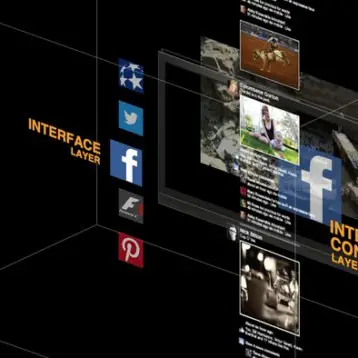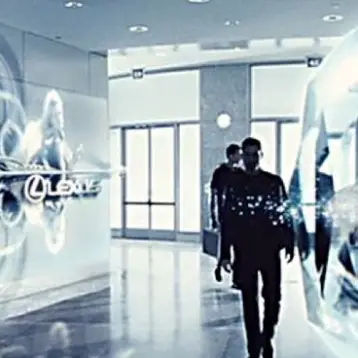|
The holographic display system uses a standard programmable graphics’ card to render over 5,000 images of interactive 3D graphics per second, projecting images to 360°-degrees with 1.25° degree separation and up to 20 updates per second. The images are projected onto a spinning anisotropic reflector and a motion-tracked vertical parallax is used to support 3D movements with perspective-correct geometric cues. The USC team demonstrated this technique with interactive raster graphics using a tracking system to measure the viewer’s height and distance from the projected images.
According to the scientists, their device incorporates several technical innovations including the development of new techniques for acquiring and rendering interactive 3D OpenGL graphics and photographed light fields. In this project, the scientists concentrated on the advanced mathematical calculations needed in order to generate 3D images at a correct perspective for viewers of different heights and at different distances from the display. The team said that one of the main challenges they had faced was achieving real-time updates using the projector at very high frame rates (many images projected per second) while still using standard DVI graphics’ hardware.
The researchers say that they expect this approach to be viable at the consumer level in just a few years time. “Our hope is that our contributions will enable other researchers in computer graphics and immersive displays to develop new 3D technology and content. 3D displays such as ours should become increasingly practical in the years to come as the core graphics and image projection components decrease in price and increase in capability”.
|
The scientists presented their 3D projection technique at the SIGGRAPH 2007 Emerging Technologies Exhibition that took place this last August in San Diego, California. At the exhibition, the USC holographic display system was awarded the prize for “Best Emerging Technology”.
TFOT covered several advanced display technologies including the Perspecta Spatial 3-D System, IO2 Technology’s Heliodisplay Floating Display and more recently Sony’s XEL-1 OLED TV and electronic paper.
You can watch a video demonstrating this technology at the USC official website, or catch it at the upcoming 10th International Conference on Virtual Reality in Laval, France in 2008.











